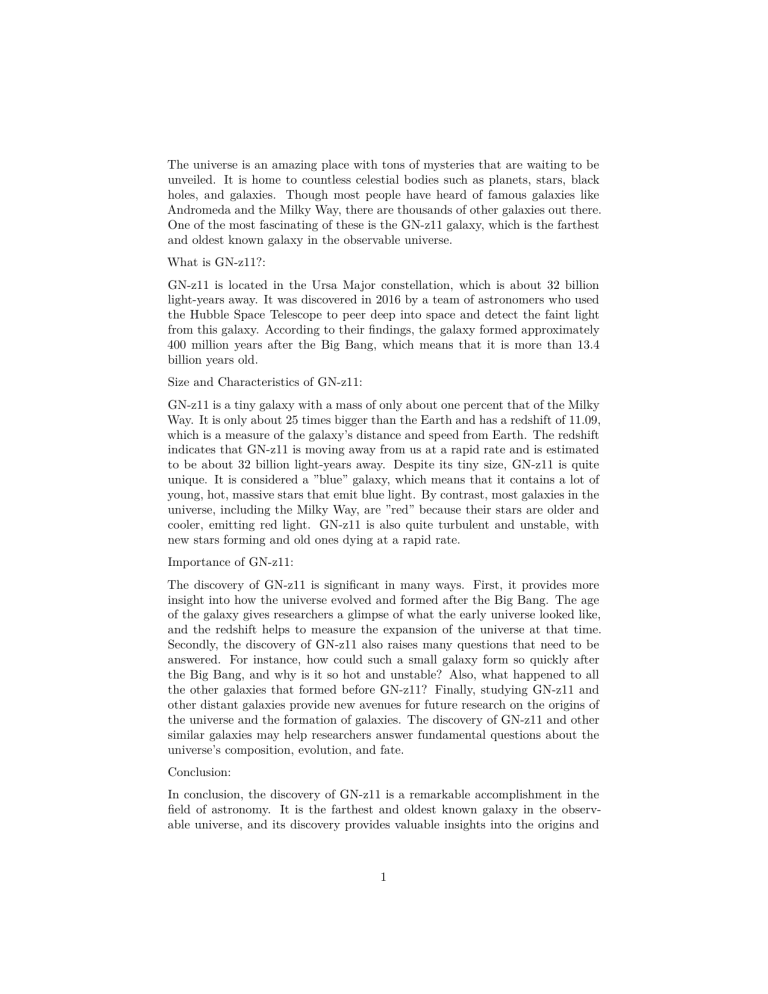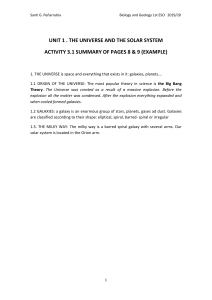
The universe is an amazing place with tons of mysteries that are waiting to be unveiled. It is home to countless celestial bodies such as planets, stars, black holes, and galaxies. Though most people have heard of famous galaxies like Andromeda and the Milky Way, there are thousands of other galaxies out there. One of the most fascinating of these is the GN-z11 galaxy, which is the farthest and oldest known galaxy in the observable universe. What is GN-z11?: GN-z11 is located in the Ursa Major constellation, which is about 32 billion light-years away. It was discovered in 2016 by a team of astronomers who used the Hubble Space Telescope to peer deep into space and detect the faint light from this galaxy. According to their findings, the galaxy formed approximately 400 million years after the Big Bang, which means that it is more than 13.4 billion years old. Size and Characteristics of GN-z11: GN-z11 is a tiny galaxy with a mass of only about one percent that of the Milky Way. It is only about 25 times bigger than the Earth and has a redshift of 11.09, which is a measure of the galaxy’s distance and speed from Earth. The redshift indicates that GN-z11 is moving away from us at a rapid rate and is estimated to be about 32 billion light-years away. Despite its tiny size, GN-z11 is quite unique. It is considered a ”blue” galaxy, which means that it contains a lot of young, hot, massive stars that emit blue light. By contrast, most galaxies in the universe, including the Milky Way, are ”red” because their stars are older and cooler, emitting red light. GN-z11 is also quite turbulent and unstable, with new stars forming and old ones dying at a rapid rate. Importance of GN-z11: The discovery of GN-z11 is significant in many ways. First, it provides more insight into how the universe evolved and formed after the Big Bang. The age of the galaxy gives researchers a glimpse of what the early universe looked like, and the redshift helps to measure the expansion of the universe at that time. Secondly, the discovery of GN-z11 also raises many questions that need to be answered. For instance, how could such a small galaxy form so quickly after the Big Bang, and why is it so hot and unstable? Also, what happened to all the other galaxies that formed before GN-z11? Finally, studying GN-z11 and other distant galaxies provide new avenues for future research on the origins of the universe and the formation of galaxies. The discovery of GN-z11 and other similar galaxies may help researchers answer fundamental questions about the universe’s composition, evolution, and fate. Conclusion: In conclusion, the discovery of GN-z11 is a remarkable accomplishment in the field of astronomy. It is the farthest and oldest known galaxy in the observable universe, and its discovery provides valuable insights into the origins and 1 evolution of the universe. By studying GN-z11 and other distant galaxies, researchers have a chance to gain a better understanding of the universe’s composition, evolution, and fate. GN-z11 represents enormous possibilities for science and technology, and scientists hope that future research will help us unlock the mysteries of the universe. 2



